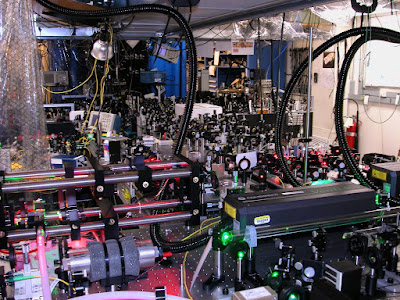
Most quantum phenomena are impossible to directly observe--such as the "spin" of an electron or the "polarization" of a photon--but now scientists have succeeded in transferring entangled spins to a mechanical oscillation--a nano-pendulum--thus opening the door to devices that feature quantum behaviors at the macroscopic level.

Physicists at the National Institute of Standards and Technology have synchronized the motions of two nano-pendulums by virtue of a quantum phenomenon called entanglement— what Albert Einstein called "spooky action at a distance." Quantum entanglement keeps atoms, electrons and photons in synchronized states no matter how far they are moved apart. Entanglement is to communications what "Beam me up Scotty" is to transportation — a kind of faster-than-light connection that instantaneously links entangled atoms regardless of distance.

The NIST nano-pendulum consisted of two ions four microns apart—charged beryllium and magnesium atoms—oscillating in perfect synchronization with another spatially separated pair of entangled ions 240 microns away. First they used pulsed lasers to cool the atoms in an electrostatic trap between two parallel facing electrodes. Then they used a pulsed laser to entangle the spin states of the two beryllium atoms, and another pulsed laser to transfer that spin state to the pendulum-like oscillation motion between the two ions.
Text: http://www.eetimes.com/showArticle.jhtml?articleID=217702119
